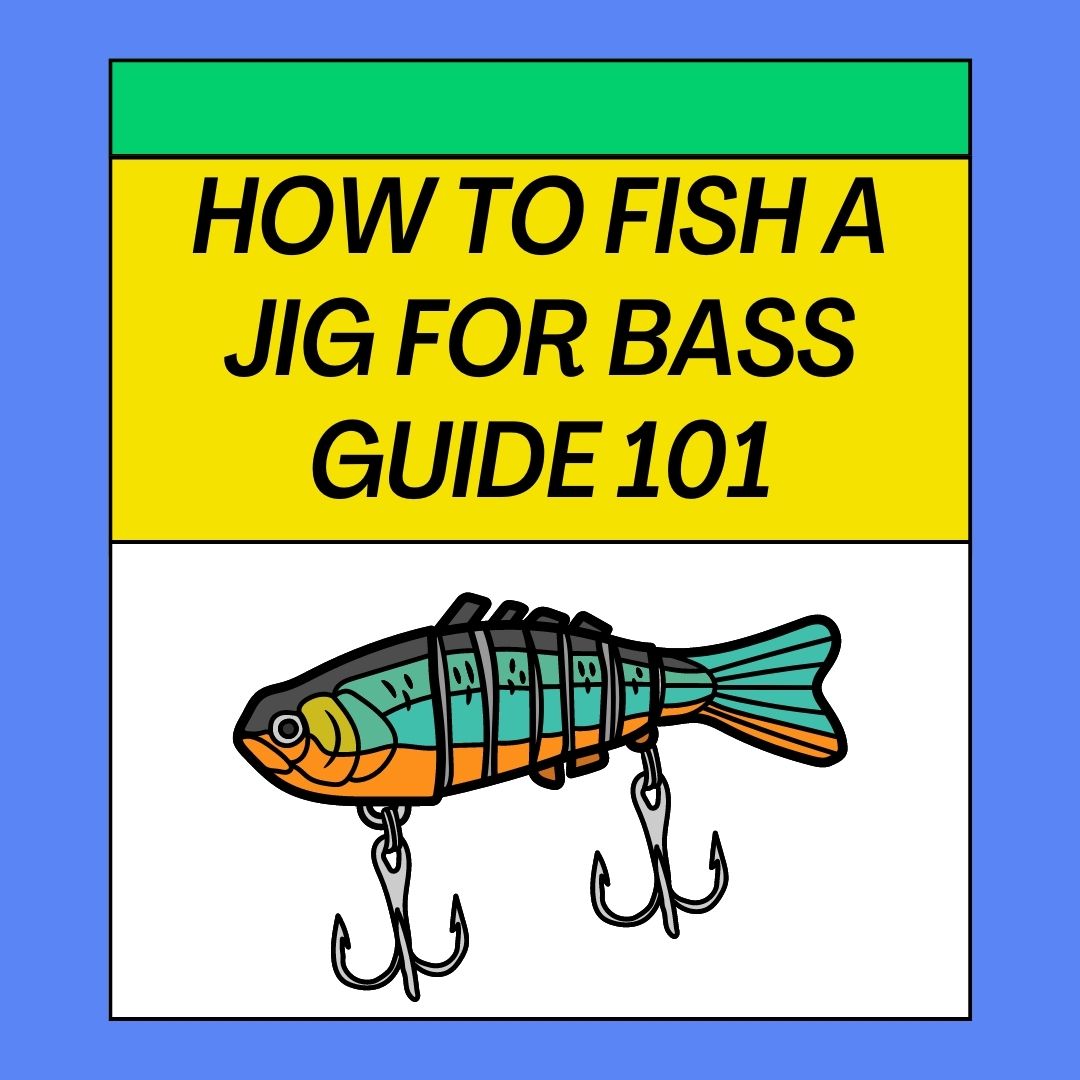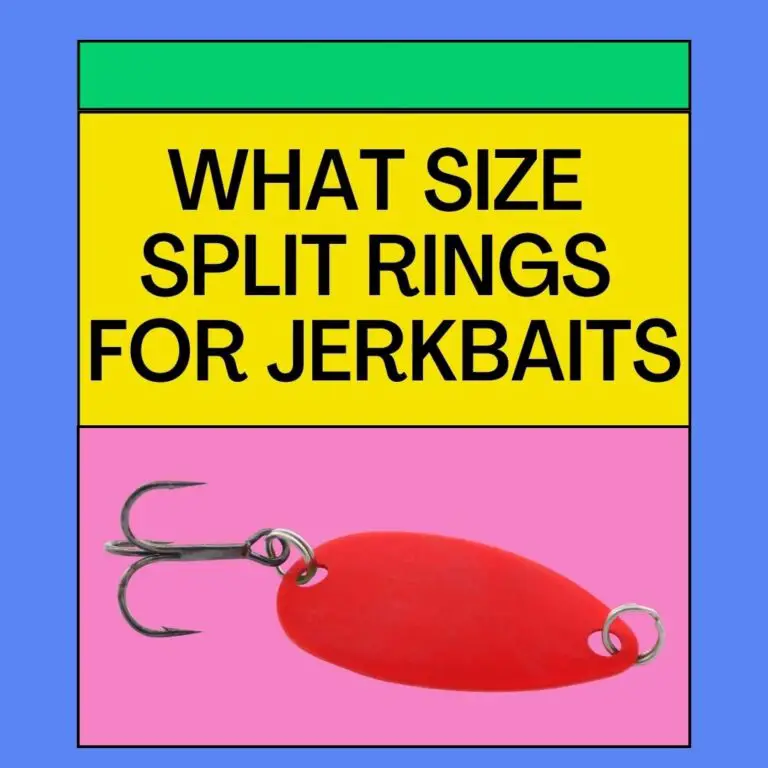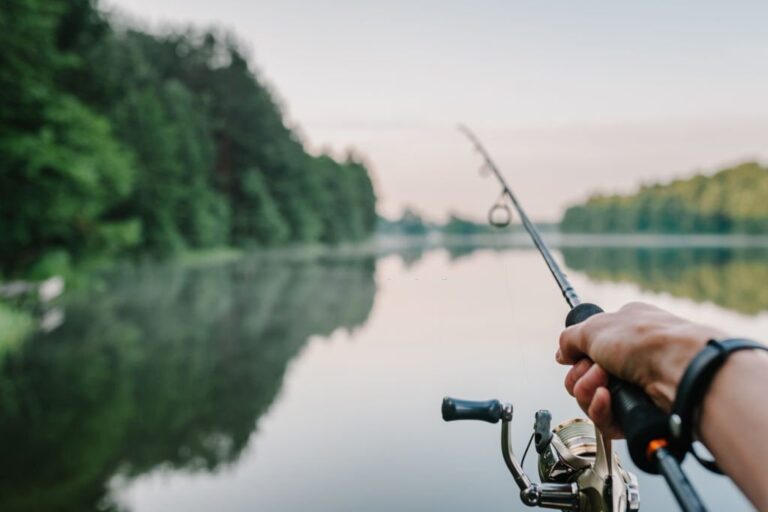
Fishing a jig for bass is an art that requires skill, technique, and an understanding of the habits and behavior of these elusive fish. Whether you’re a novice angler or an experienced pro, mastering the art of jig fishing can greatly increase your chances of landing trophy-sized bass. In this article, we will explore the ins and outs of fishing a jig for bass, covering everything from gear selection to presentation techniques. So grab your fishing rod, and let’s dive into the world of jig fishing!
A Comprehensive Guide to Successful Jig Fishing
I. Introduction
When it comes to bass fishing, the jig is a versatile and effective bait that consistently produces results. A jig is a type of fishing lure consisting of a weighted head and a skirt made of silicone or other materials that imitate the appearance of baitfish or crawfish. The design and action of a jig make it an irresistible offering for bass, attracting them with its lifelike movement and enticing profile. In the following sections, we will discuss the various aspects of fishing a jig for bass, providing you with the knowledge and skills to become a successful angler.
II. Understanding the Jig
Before we delve into the techniques and strategies for fishing a jig, it’s essential to understand the different components of this bait. A typical jig consists of a lead or tungsten head, a hook, and a skirt. The head provides the weight that allows the jig to sink to the desired depth, while the hook secures the fish upon biting. The skirt is the part that creates the lifelike appearance and action, mimicking the movement of prey.
There are several types of jigs available, including flipping jigs, football jigs, swim jigs, and finesse jigs. Each type has its own unique design and application, making it important to choose the right jig for the fishing conditions and bass behavior you’re targeting.
III. Setting up Your Fishing Gear
To effectively fish a jig for bass, it’s crucial to have the right fishing gear. Start by selecting a fishing rod and reel combination that is suitable for jig fishing. A medium-heavy or heavy power rod with a fast or extra-fast action is recommended for casting and setting the hook. Pair it with a high-quality baitcasting reel that offers smooth drag and line control.
Next, choose the appropriate fishing line and leader. Fluorocarbon line is popular for jig fishing due to its low visibility underwater and sensitivity, allowing you to detect even the slightest nibble. A leader made of fluorocarbon or monofilament can be added to prevent line breakage and provide additional abrasion resistance.
In terms of tackle and equipment, you’ll need a selection of jigs in different colors and weights, as well as trailers to enhance the presentation. Quality scissors, pliers, and hook sharpeners are essential tools for adjusting and maintaining your jig setup.
IV. Techniques for Fishing a Jig
When it comes to fishing a jig, there are various techniques you can employ to entice bass into biting. Let’s explore some of the most effective techniques used by anglers:
- Casting and retrieving techniques: Cast the jig to a target area and allow it to sink to the desired depth before starting a slow and steady retrieve. This technique is ideal for covering large areas and locating actively feeding bass.
- Jigging and hopping techniques: Lift the rod tip sharply to make the jig hop off the bottom and then let it fall back down. Repeat this motion to imitate the movement of a baitfish or crawfish. Jigging is effective when bass are holding near structure or in deeper water.
- Flipping and pitching techniques: Flip or pitch the jig accurately into specific targets such as docks, brush piles, or vegetation patches. This close-quarters technique requires precision and finesse to present the jig quietly and effectively.
- Dragging and swimming techniques: Drag the jig along the bottom using a slow and steady retrieve, imitating a crawfish or a baitfish foraging along the lake or riverbed. Swimming the jig just above the bottom can also trigger reaction strikes from bass.
By mastering these techniques and experimenting with different combinations, you can adapt to various fishing conditions and entice bass into biting.
V. Seasonal Considerations
Successful jig fishing for bass requires an understanding of how bass behavior and feeding patterns change throughout the seasons. Let’s take a closer look at the seasonal considerations when fishing a jig:
- Jig fishing in different seasons: In the spring, bass move to shallow waters for spawning, making it an excellent time for jig fishing near spawning beds. During the summer, bass seek cooler, deeper waters, and fishing a jig near drop-offs or structure can yield great results. In the fall, bass are actively feeding to prepare for winter, making it an ideal time for jig fishing. In winter, when bass become less active, slow presentations near deep structure or in the vicinity of wintering holes can attract bites.
- Adjusting tactics based on water temperature: Bass are cold-blooded creatures, and their activity levels and feeding habits are heavily influenced by water temperature. As the water temperature changes, you may need to modify your jig presentation and retrieve speed accordingly. Slower presentations are often more effective in colder water, while faster retrieves can trigger reaction strikes in warmer water.
- Targeting bass in various habitats: Bass can be found in a variety of habitats, including rocky areas, submerged vegetation, brush piles, and docks. Understanding the specific habitat preferences of bass in your fishing location can help you target them more effectively with a jig. By adapting your jig presentation to match the surrounding environment, you can increase your chances of success.
VI. Locating Bass with a Jig
To increase your chances of landing bass with a jig, it’s crucial to identify their preferred habitats and locate areas where they are likely to be present. Here are some tips for locating bass with a jig:
- Identifying key bass holding areas: Look for areas with cover, such as rocks, fallen trees, weed beds, or submerged vegetation. These areas provide shelter and ambush points for bass, making them prime targets for jig fishing.
- Understanding bass behavior and feeding patterns: Bass are opportunistic predators that feed on a variety of prey. They tend to be more active during low-light periods, such as early morning or late evening. Pay attention to their behavior and adjust your jig presentation accordingly.
- Utilizing depth finders and fish finders: Modern technology can greatly assist in locating bass. Use a depth finder or fish finder to identify underwater structures, depth changes, and concentrations of baitfish. This information can guide your jig fishing strategy and help you focus on high-probability areas.
By combining your knowledge of bass behavior, habitat preferences, and the use of fish-finding technology, you can increase your chances of finding and catching bass with a jig.
VII. Presentation and Retrieval Tips
The way you present and retrieve your jig can make a significant difference in enticing bass to strike. Here are some presentation and retrieval tips to enhance your jig fishing success:
- Modifying your jig presentation: Experiment with different jig presentations, such as dragging, hopping, or swimming, to imitate the movement of prey. Vary the speed and cadence of your retrieves to trigger reaction strikes from bass.
- Adding trailers and trailer selection: Trailers are soft plastic attachments that can be added to the hook of the jig to enhance its appearance and action. Choose trailers that match the natural forage in the area or experiment with contrasting colors to trigger a response from bass.
- Varying retrieval speeds and cadences: Bass can exhibit different feeding moods and preferences throughout the day. By changing your retrieval speed, pausing, or adding intermittent twitches, you can entice bass that may be reluctant to strike a stationary or monotonous presentation.
Remember to pay attention to the feedback your rod provides, as even the subtlest strikes can be detected through sensitivity and practice. Stay alert and be ready to set the hook at the slightest indication of a bite.
VIII. Troubleshooting and Problem Solving
Jig fishing, like any other fishing technique, comes with its own set of challenges. Here are some troubleshooting tips to overcome common obstacles:
- Overcoming common challenges in jig fishing: One common challenge is dealing with snags and hang-ups. To minimize snagging, be mindful of the structure and cover in the area and adjust your retrieve accordingly. Additionally, using weedless jigs or adding a weed guard can help reduce snagging.
- Handling snags and avoiding hang-ups: If you do get snagged, avoid the temptation to forcefully jerk or pull on the line. Instead, gently shake the rod tip or apply slight pressure to dislodge the jig. In some cases, you may need to break the line and re-tie your jig.
- Adjusting tactics for inactive or finicky bass: If the bass seem unresponsive or finicky, try downsizing your jig, using a slower presentation, or experimenting with different colors or trailers. Sometimes, making subtle adjustments can make a significant difference in triggering strikes.
Remember that practice and experience are key to becoming proficient in troubleshooting and problem-solving while jig fishing. Learn from each fishing trip and adapt your approach accordingly.
IX. Best Practices and Pro Tips
To further enhance your jig fishing skills, here are some best practices and pro tips:
- Maintaining proper form and technique: Pay attention to your form and technique when casting, retrieving, and setting the hook. Smooth, controlled motions and accurate casts can greatly improve your chances of success.
- Paying attention to subtle strikes: Bass can exhibit delicate and subtle strikes, especially when they are not aggressively feeding. Train yourself to detect even the slightest hesitation or line movement, and be ready to set the hook.
- Adapting to changing fishing conditions: Bass behavior can change throughout the day or due to external factors such as weather or water clarity. Be adaptable and willing to switch up your techniques, colors, or retrieve speeds based on the current conditions.
By incorporating these best practices and pro tips into your jig fishing approach, you can refine your skills and increase your chances of landing more bass.
X. Conservation and Ethical Fishing
As responsible anglers, it’s important to practice conservation and ethical fishing when pursuing bass with a jig. Here are some guidelines to follow:
- Practicing catch and release: Consider releasing bass after catching them, especially if they are of reproductive age or if there are local regulations in place. This helps maintain healthy fish populations for future generations.
- Proper handling and care of bass: Handle bass with wet hands to minimize damage to their protective slime coat. Avoid squeezing or applying excessive pressure on the fish. Use appropriate landing nets or lip-gripping tools to reduce stress and potential injuries.
- Understanding local fishing regulations: Familiarize yourself with the fishing regulations and guidelines specific to your area. Adhere to size limits, bag limits, and any special regulations in place to ensure sustainable fishing practices.
By being mindful of the impact you have on the fish and their environment, you can contribute to the long-term conservation of bass populations.
XI. Conclusion
Fishing a jig for bass is an exciting and rewarding experience. With the right gear, techniques, and knowledge, you can consistently catch bass using this versatile bait. Remember to experiment with different presentations, adapt to changing fishing conditions, and practice conservation-minded fishing practices. So, grab your jig rod, head to your favorite fishing spot, and get ready to hook into some bass!
FAQs (Frequently Asked Questions)
- What is the best color jig for bass fishing?
- The best color jig for bass fishing can vary depending on factors such as water clarity, weather conditions, and the natural forage in the area. Generally, dark-colored jigs, such as black and blue or green pumpkin, work well in stained or murky water, while more natural colors like brown or green can be effective in clear water.
- Do I need to use a trailer with my jig?
- Using a trailer with your jig can enhance its appearance and action, making it more enticing to bass. Trailers come in various shapes and sizes, including crawfish imitations, creature baits, or swimbait-style trailers. Experiment with different trailers to find what works best for you in different fishing situations.
- Can I fish a jig with a spinning rod and reel?
- While baitcasting gear is often preferred for jig fishing due to its casting accuracy and power, you can also fish a jig with a spinning rod and reel setup. Use a spinning rod with medium to medium-heavy power and pair it with a reel that has a smooth drag system and can handle the line weight and jig size you’re using.
- What’s the difference between a flipping jig and a football jig?
- A flipping jig is designed for close-quarters fishing, such as flipping or pitching into specific targets like docks, vegetation, or brush piles. It usually has a bulkier profile and a weed guard to prevent snagging. On the other hand, a football jig has a more elongated head shape and is primarily used for fishing on the bottom, particularly in rocky or hard-bottom areas.
- Where can I learn more about jig fishing for bass?
- There are many online resources, books, and videos available that provide in-depth information on jig fishing for bass. Additionally, joining local fishing forums or clubs can provide opportunities to learn from experienced anglers who specialize in jig fishing. Remember to always practice and apply what you’ve learned to gain firsthand experience on the water.

![Hw-602b vs Hw-603b [Best Canister Filter Suitability!]](https://huntandlunch.com/wp-content/uploads/2022/11/Hw-602b-Vs-Hw-603b-768x768.jpg)




